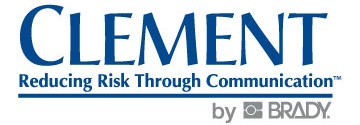How to Handle the Heat and Coronavirus Protection
Throughout the COVID-19 pandemic, OSHA has strongly recommended the use of face coverings in the workplace to help reduce the spread of COVID-19.
Face coverings, either cloth face coverings or surgical masks, are simple barriers that help prevent respiratory droplets from your nose and mouth from reaching others and are meant to protect those around you, in case you are infected but do not know it, and can also reduce your own exposure to infection in certain circumstances. However, workers who wear cloth face coverings in hot and humid environments or while performing strenuous activities indoors, such as those in bakeries, kitchens, laundries, electric utilities, fire services, mills, foundries, manufacturing and warehousing, can find cloth face coverings to be uncomfortable.
In order to protect employees from both COVID-19 and heat-related illness, OSHA has compiled the following list of recommendations for employers:
- Acclimatize new and returning workers to environmental and work conditions while wearing cloth face coverings.
- Prioritize the use of cloth face coverings when workers are in close contact with others (less than 6 feet), such as during group travel or shift meetings.
- Allow workers to remove cloth face coverings when they can safely maintain at least 6 feet of physical distance from others.
- Evaluate the feasibility of wearing cloth face coverings for each worker and consider alternatives (e.g., face shields) when appropriate.
- Increase the frequency of hydration and rest breaks in cooled environments.
- Incorporate at least 6 feet of physical distancing into break areas by staggering breaks, spacing workers, or limiting the number of workers on break at a time, where feasible.
- Enhance ventilation throughout the work site, including in break areas, where feasible.
- Allow workers to return to personal vehicles during breaks to use air conditioning, when possible. Multiple workers should generally not return to the same car.
- If fans are used, avoid directing the fan so it pushes air over multiple people at the same time, since fans may increase the distance respiratory droplets can travel.
- Encourage workers to use cloth face coverings that optimize fit and comfort and are made out of breathable, moisture-wicking materials.
- Encourage workers to change cloth face coverings when wet, as wet face coverings make it more difficult to breathe and are not as effective. Provide clean replacement cloth face coverings or disposable face masks, as needed, for workers to change into throughout the work shift.
- Ensure workers use handwashing facilities or hand sanitizers with at least 60% alcohol often, as heat or moisture build-up may cause workers to put on and take off cloth face coverings frequently.
Looking for COVID-19 information for your employees as they return to the workplace? Clement has a variety of signs and posters that can be displayed on-site to ensure safety protocols are followed. Click here for more information.

